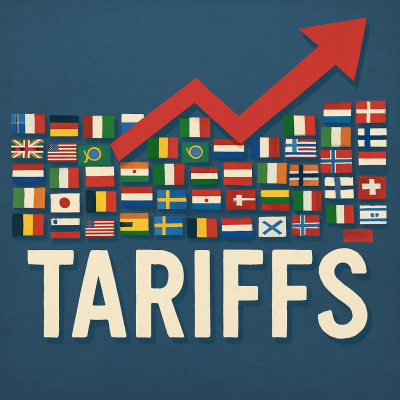Baltimore, MD - April 3, 2025 - President Donald Trump this week announced sweeping new tariffs, including a 10 percent tax on imports from all countries and higher tariff rates on dozens more.

Maryland faces a unique set of challenges under President Donald Trump’s new reciprocal tariffs, which are expected to significantly impact lower-income households. Economists warn that essential goods like food, clothing, and energy will see sharp price increases, with Marylanders feeling the burden. A Yale Budget Lab study highlighted that households earning around $43,000 annually would experience a 2.3% drop in disposable income from the new tariffs, while those in the state’s median income range of $101,652 would also see significant financial strain.The new tariffs, along with those previously imposed on auto imports, steel, and aluminum, are set to take effect April 9 and would raise the U.S. average tariff rate to its highest level since 1909. This has led to widespread concerns over rising consumer costs, economic slowdown, and a potential recession. Maryland lawmakers are split on the issue: U.S. Rep. Andy Harris supports the tariffs, claiming they will prioritize American workers, while Sen. Chris Van Hollen has criticized them as a “sham” that unfairly increases costs for working families.As Maryland families brace for the effects of higher prices on groceries, clothing, and household goods, the state’s leaders and residents are left navigating how best to respond to these sweeping economic changes.
Baltimore, MD - April 3, 2025 - President Donald Trump this week announced sweeping new tariffs, including a 10 percent tax on imports from all countries and higher tariff rates on dozens more.
Trump, in an announcement Wednesday, said the "reciprocal tariffs" are aimed to promote domestic manufacturing and narrow the gap with the tariffs the White House says other countries unfairly impose on American-made products.
However, many economists warn the action could mean Maryland consumers can expect to pay more for many necessities, such as food, clothing, and energy. And those impacts will be felt most severely by lower-income Americans, a new analysis from the Yale Budget Lab suggests.
The reciprocal tariffs, which range from 10 percent to 46 percent, are set to take effect April 9. The average tariff rate the United States charges would increase to roughly 22 percent from 2.5 percent in 2024, according to Olu Sonola, head of U.S. economic research at Fitch Ratings. That’s the highest tariff rate since 1909.... Read More:
















